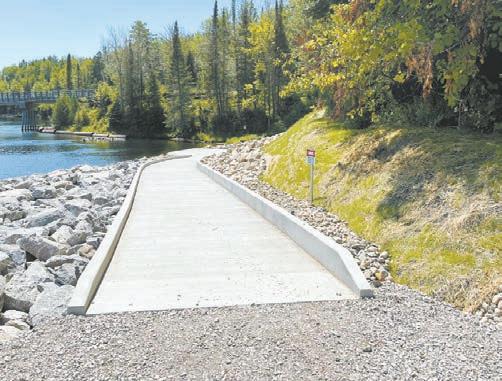The Tradition Begins By Kate Reitz Nearly 75 years ago, at a 24-hour truck stop in Oscoda, Michigan, Howard Brubaker of the Oscoda Chamber of Commerce and Frank Davis of the Tawas Area Chamber of Commerce collaborated on an idea initially meant to boost tourism to their little towns situated on the shores of Lake Huron. From that brainstorming session, what has become known as North
America’s toughest and richest canoe race, the non-stop 120-mile, AuSable River Canoe Marathon, was born. For most of the nearly 75 years since that first race, The Marathon has started along the banks of the AuSable in downtown Grayling, Michigan, at a place that has become synonymous with The Marathon, and that over these many years has been referred to by many people simply as, ‘Rays.’ With a rich history that spans back to a period long before The Marathon came to be, this same upper area of the AuSable River was where Michigan Native Americans and early explorers portaged from the AuSable to the Manistee River and back, while traveling between Michigan’s storied coasts by canoe. This spot on the riverbanks in downtown Grayling is adjacent to the location that Chippewa Indian Chief David Shoppenagon and his family called home beginning in the late 1870’s. Chief Shoppenagon utilized his spot on those same banks of the AuSable as the hub of his popular hunting and fishing guiding business, launching a tradition of service that has carried on in that same location, more than 150 years later. When the first official race kicked off in September 1947, only a small, four-wall structure owned by Sailor Bill Huddleston and known as ‘Sailor’s Fly Factory’ stood at this spot on the banks of the
4
AuSable. Sailor’s shop served as the starting line of what was then known as the ‘AuSable River Canoe Championship Marathon.’ That first year, 46 teams started the race and only 15 finished, with Allen Carr (28) and Delbert Case (21), both of Grayling, Michigan taking the title with a winning time of 21 hours, 3 minutes. By the time
the third AuSable Marathon was held in September of 1949, then owner Ray Snider, was nearing completion on the construction of the much larger ‘Ray’s Canoe Livery’ which he modeled after the lumbering museum building at Hartwick Pines State Park. This two-story, half-log building with the long, riverside front porch has served as the backdrop for the start of most AuSable Marathons since that time. Ownership of Rays Canoe Livery transferred from Ray Snider to the Al and Cappy Westervelt Family in 1968, who continued strong support of the Marathon and contributed to its success. Ray’s was purchased by the Southard
74th Annual AuSable River Canoe Marathon
Family in 1979 and became known as ‘Ray’s Canoe Livery and The Fly Factory.’ In a nod to Chief Shoppenagon’s business activities some 100 years earlier, fly fishing guiding and outfitters services were once again offered, along with recreational canoe and kayak rentals. Throughout the nearly 30 years of ownership by the Southard Family, they enthusiastically embraced hosting duties as the starting point of the race, and invested considerable time and effort promoting The Marathon, and the sport of marathon canoe racing. In 2008 Ray’s Canoe Livery and The Fly Factory became ‘The Old AuSable Fly Shop,’ a fly-fishing outfitter and pro-shop offering guide services and lodging, under the ownership of Jeff Gardner and Linda Matas. In 2017, ‘Ray’s BBQ, Brews & Blues’ restaurant was added to the property. Open yearround and described on its website as a place to “Eat some great BBQ on the banks of the famous Au Sable River while drinking one of the best beers you’ve ever had.,” Ray’s BBQ, Brews and Blues also boasts full riverside dining during the summer, and arguably one of the best viewpoints of The Marathon start that money can buy. Although the current-day view of these banks and river bends of the upper AuSable River would no-doubt be nearly unrecognizable to the Native Americans who traveled them long before Michigan even became a state, or likely even to the flyfishermen and canoe racers who graced the waters in the 1940’s, the traditions they established so long ago continue on today, honoring them and celebrating the storied river that winds through the valleys from Grayling to Oscoda and the shores of Lake Huron.








